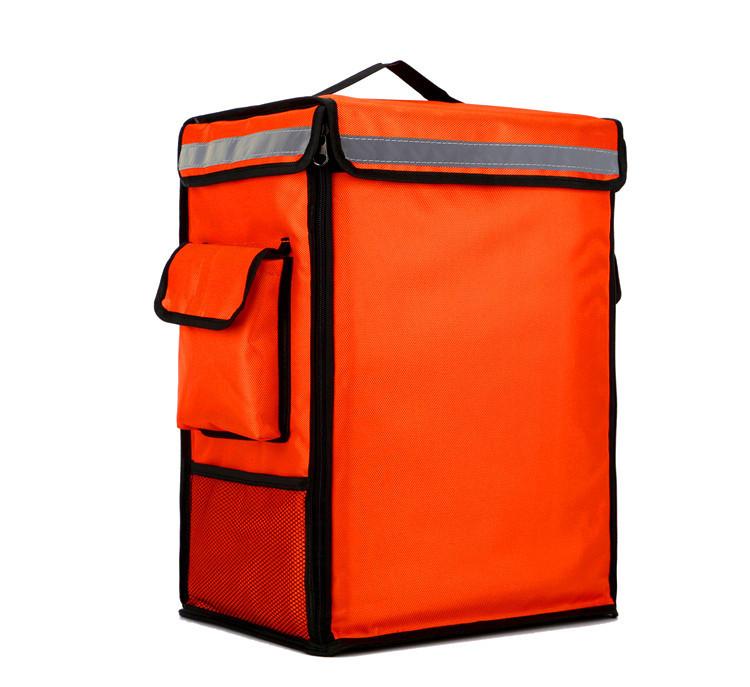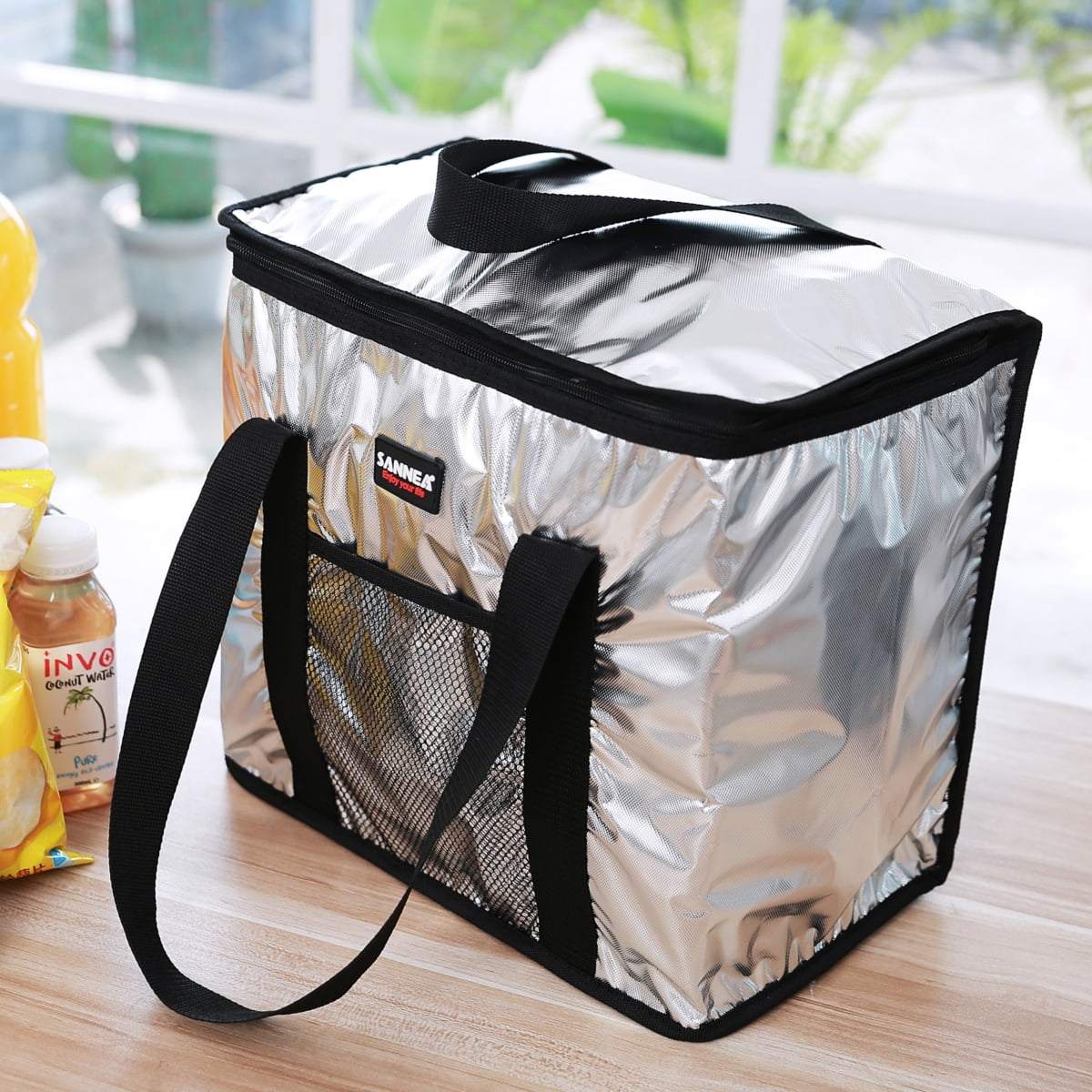In the bustling world of food delivery, food delivery bags play a crucial role in ensuring that meals reach their destinations fresh, appetizing, and intact. These bags are designed with a host of features to protect food from temperature fluctuations, spills, and contamination, while also providing convenience and comfort for delivery drivers.
This comprehensive guide delves into the essential aspects of food delivery bags, exploring their design features, material considerations, compartmentalization, ergonomic features, cleaning and maintenance, customization options, safety considerations, market trends, and a comparison of different models. Whether you’re a seasoned delivery driver or a restaurant owner seeking to optimize your delivery operations, this guide will provide you with valuable insights and practical tips to choose the perfect food delivery bag for your needs.
Design Features

A well-designed food delivery bag is essential for ensuring that food arrives at its destination in a fresh and appetizing condition. The key design elements include:
Insulation and Temperature Control
Insulation is crucial for maintaining the temperature of food during delivery. High-quality delivery bags use materials such as foam, bubble wrap, or reflective lining to create an insulated environment. This helps to keep hot food hot and cold food cold, even during long delivery times.
Durability and Water Resistance
Food delivery bags must be durable enough to withstand the rigors of daily use. They should be made from sturdy materials that can resist punctures, tears, and abrasion. Additionally, water resistance is important to protect the contents of the bag from rain or spills.
Material Considerations

The choice of materials used in food delivery bags plays a crucial role in determining their durability, insulation capabilities, and overall cost.
Nylon
Nylon is a synthetic fabric known for its durability and resistance to wear and tear. It is also lightweight and flexible, making it easy to handle and store. However, nylon may not provide the best insulation, allowing food to cool down more quickly.
Polyester
Polyester is another synthetic fabric that offers similar durability to nylon. It is also water-resistant, making it a good choice for deliveries in wet weather. Polyester provides better insulation than nylon, helping to keep food warm or cold for longer periods.
Canvas
Canvas is a heavy-duty fabric made from cotton or hemp. It is extremely durable and can withstand heavy use. However, canvas is not waterproof and may absorb moisture, making it less suitable for deliveries in wet weather.
Neoprene, Food delivery bag
Neoprene is a synthetic rubber material that is highly insulating. It is commonly used in wetsuits and other products that require thermal protection. Neoprene food delivery bags can keep food warm or cold for extended periods, making them ideal for long-distance deliveries.
Compartmentalization and Organization
Food delivery bags often feature multiple compartments to keep food items organized and prevent spills. Compartmentalization is crucial for maintaining food quality and ensuring that different items don’t mix or become soggy.
These compartments can be designed in various ways, including:
Insulated Compartments
- Separate compartments insulated with materials like foam or padding to maintain food temperature.
- Keep hot items hot and cold items cold, preventing spoilage or loss of freshness.
Removable Dividers
- Flexible or adjustable dividers that allow for customization of compartment sizes.
- Accommodate different food items and quantities, ensuring a snug fit and preventing movement during delivery.
Designated Pockets
- Specific pockets designed for holding utensils, napkins, or condiments.
- Keep these items organized and easily accessible, preventing spills or clutter.
Ergonomic Features
Food delivery bags are designed to ensure the comfort of delivery drivers, allowing them to perform their duties efficiently and without physical strain. Ergonomic considerations play a crucial role in bag design, particularly in the construction of straps and handles.
Comfortable straps and handles are essential for reducing strain on delivery drivers’ shoulders and backs. Adjustable straps allow drivers to customize the fit of the bag, ensuring a snug and secure fit that distributes weight evenly. This prevents discomfort and fatigue, even during extended delivery periods.
Adjustable Straps
Adjustable straps are a key ergonomic feature of food delivery bags. They allow drivers to adjust the length of the straps to achieve a customized fit that suits their height and body type. This ensures optimal weight distribution and reduces strain on the shoulders and back.
Adjustable straps are particularly beneficial for drivers who make frequent deliveries, as they enable them to adjust the bag’s fit throughout the day.
Cleaning and Maintenance
Maintaining a clean and hygienic food delivery bag is crucial to prevent bacteria growth and ensure food safety. Regular cleaning helps preserve the quality and longevity of the bag.
Regular Cleaning
* Wash the bag with warm, soapy water after every use.
- Use a mild detergent and avoid harsh chemicals that can damage the material.
- Rinse the bag thoroughly and hang it upside down to air dry.
- Do not put the bag in the washing machine or dryer, as this can damage the insulation and other components.
Deep Cleaning
* Deep clean the bag every 3-4 months or as needed.
Soak the bag in a solution of water and white vinegar (1
1 ratio) for 30 minutes.
- Use a soft brush to gently scrub away any dirt or debris.
- Rinse the bag thoroughly and air dry.
Importance of Maintenance
Proper maintenance extends the lifespan of the bag by:* Preventing bacteria growth and ensuring food safety
- Maintaining the insulation and keeping food at the desired temperature
- Preventing wear and tear and preserving the bag’s appearance
Customization Options
Customization options for food delivery bags provide businesses with the opportunity to enhance their brand visibility and appeal to customers.
Branding and personalization allow delivery bags to become a marketing tool, increasing recognition and brand awareness. Custom designs can incorporate logos, colors, and graphics that align with the business’s identity, making the bags instantly recognizable.
Benefits of Customization
- Enhanced brand visibility
- Increased customer recognition
- Effective marketing tool
- Differentiation from competitors
Safety Considerations
Food delivery bags prioritize the safety of both delivery personnel and the food they transport. They incorporate features that enhance visibility and prevent spills, ensuring a safe and efficient delivery experience.
Reflective Strips for Nighttime Visibility
Reflective strips are essential for nighttime deliveries, as they increase the visibility of delivery personnel on the road. These strips reflect light from headlights, making delivery personnel more noticeable to other drivers, cyclists, and pedestrians, reducing the risk of accidents.
Secure Closures to Prevent Spills
Secure closures, such as zippers, buckles, or Velcro straps, are crucial for preventing spills and maintaining food integrity. They keep the bag securely closed during transit, preventing food from spilling out or becoming contaminated. This ensures that customers receive their orders in a clean and presentable condition.
Market Trends: Food Delivery Bag

The food delivery industry is constantly evolving, and so too are the bags designed to transport food. In recent years, we’ve seen a number of trends emerge in food delivery bag design, including:
Sustainable Materials and Eco-Friendly Options
Consumers are increasingly demanding sustainable products, and this trend is reflected in the food delivery bag market. Many manufacturers are now using recycled materials and other eco-friendly options to create their bags. These materials are not only better for the environment, but they can also be more durable and easier to clean.
Technology Advancements
Technology is also playing a role in the evolution of food delivery bags. Some bags now feature built-in GPS tracking, which allows delivery drivers to track their progress and ensure that food is delivered on time. Other bags have built-in heating or cooling elements, which can help to keep food at the optimal temperature.
Customization Options
Food delivery bags are also becoming increasingly customizable. Many manufacturers now offer a variety of options for colors, styles, and features. This allows delivery drivers to choose a bag that best suits their needs and preferences.
Comparison and Contrast
When selecting a food delivery bag, it’s essential to compare different models based on design, materials, and features. Each bag offers unique advantages and drawbacks, so understanding these differences can help you choose the right one for your specific needs.
To facilitate your decision-making, we have compiled a table summarizing the key differences between popular food delivery bag models:
Table: Comparison of Popular Food Delivery Bags
| Feature | Bag A | Bag B | Bag C |
|---|---|---|---|
| Design | Insulated backpack with multiple compartments | Large, open-top tote with adjustable straps | Compact, insulated shoulder bag with a roll-top closure |
| Materials | Waterproof nylon and insulated foam | Durable canvas and faux leather accents | Lightweight, water-resistant polyester |
| Features | Temperature-controlled compartments, expandable capacity, adjustable straps | Spacious interior, removable dividers, multiple pockets | Compact size, adjustable shoulder strap, easy-to-clean lining |
When choosing the right food delivery bag, consider the following factors:
- Delivery type:Backpacks are ideal for bike or foot delivery, while totes and shoulder bags are more suitable for car delivery.
- Capacity and organization:Determine the amount of food you typically deliver and choose a bag with the appropriate capacity and compartmentalization.
- Durability and insulation:Consider the materials used and the level of insulation to ensure the bag can withstand wear and tear while keeping food at the desired temperature.
- Ergonomics:Look for bags with comfortable straps and handles to minimize strain during delivery.
- Cleaning and maintenance:Choose a bag that is easy to clean and maintain to ensure food safety and hygiene.
FAQ Guide
What are the essential design features of a food delivery bag?
Essential design features include insulation for temperature control, durability for longevity, water resistance to protect against spills, and ergonomic features for driver comfort.
What materials are commonly used in food delivery bags, and what are their advantages and disadvantages?
Common materials include nylon, canvas, and polyester, each with varying levels of durability, insulation, and cost-effectiveness.
How does compartmentalization benefit food delivery bags?
Compartmentalization allows for organized storage of different food items, preventing spills, maintaining food quality, and maximizing space utilization.
What safety features should be considered when choosing a food delivery bag?
Safety features include reflective strips for nighttime visibility and secure closures to prevent spills and protect food from tampering.
How can I customize a food delivery bag to enhance my brand visibility?
Customization options include adding your company logo, branding colors, and unique designs to increase brand recognition and marketing efforts.
